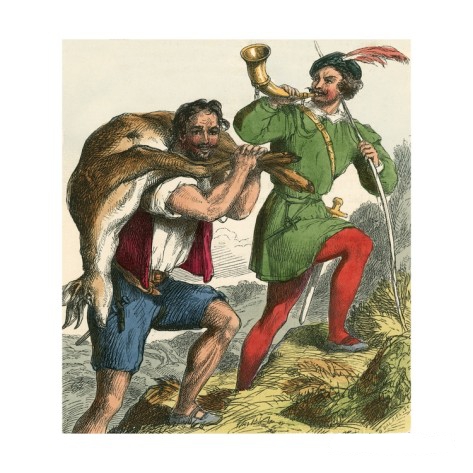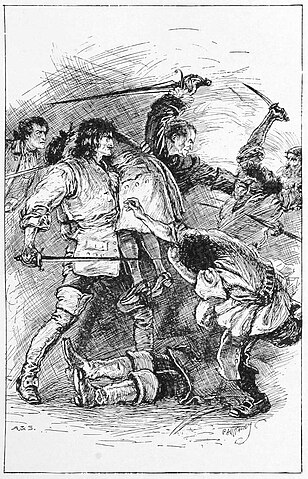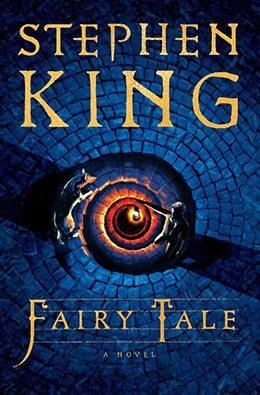We know Robin Hood the outlaw, but do we know about Robin Hood, the average citizen? Of course, every hero has an origin story, and Robin’s is tragic and sorrowful. In this post, we are going to analyze the ballad, “Robin Hood’s Progress to Nottingham.”
Summary
The ballad, “Robin Hood’s Progress to Nottingham” tells the tale of how Robin Hood became and outlaw. In it, he ventures to Nottingham to test his skill in archery. The ballad begins by telling us that Robin is “fifteen winters old,” and “he was a proper young man / Of courage stout and bold.”
However, he encounters “fifteen forresters” along the way who are all “drinking bear, ale, and wine.” After questioning them of news of a shooting match (in which Robin could test his luck), the foresters treat Robin unkindly. They mock his archery abilities by stating, “That ever a boy so young / Should bear a bow before our king, / That’s not able to draw one string.”
Immediately after, the foresters set a wager. They claim that Robin could “hitst not the marke a hundred rod, / Nor causest a hart to dye.” Yet, he causes a heart to die, as he hits his mark. Regardless, the foresters decide not to pay Robin. So the archer “laught, and begun to smile / as hee went over the plain.” Out of bloodthirsty vengeance, Robin slays fourteen of the fifteen foresters. He then takes the last one hostage, only to “sent another arrow / That split his head in twain.”
The people of Nottingham try to arrest Robin and retrieve the bodies. Yet, Robin kills and maims many of them with his arrows and flees into the forest. The poem states: “Some lost legs, and some lost arms, / And some did lose their blood, / But Robin Hood hee took up his noble bow, / And is gone to the merry green wood.” Afterward, the remaining townspeople take the bodies to be buried.
Background
The ballad is one of the traditional English ballads and departs from modern Robin Hood myth in showing Robin as a true outlaw–and a vain one at that. This poem is a part of a larger corpus of Robin Hood stories that comes from stories told over the centuries, and comes from “several seventeenth-century broadsides and the early garlands” (Knight). Though, “Robin Hood’s Progress to Nottingham” can be traced back to the late medieval period.
The ballad certainly came from times of social upheaval, as stated here in this book review, when many citizens passed stories such as these of folk heroes who stood against taxation as a form of tyranny. As such, it embodies a story of rebellion and independence; that is to say, getting what is rightfully yours. As noted by some authors, the ballad has a “fierce tone” and demonstrates “an orgy of self-defence.” Furthermore, the ballad “harks back to the violent anti-forester spirit of Johnie Cock,” in which a palmer of foresters betray a boy and attempt to kill him.
The ballad appears in various collections of ballads, which are known as child Ballads, as they appear in the works and collections of Francis James Child, such as The English and Scottish Popular Ballads, which was published in the late 19th century.
Conclusion
We normally think of Robin Hood as a right and just person who is an outlaw due to the tyrannical circumstances of the feudal system in Medieval Europe. However, this tale tells us that Robin was far more bloodthirsty and violent, killing 15 plus people because he was denied his reward. With that said, we have to chalk up the morality of the medieval period to something wholly different from what we know today, because it was a different time and a different system of judgement and punishment. Consider Grimm’s Fairy Tales and how violent those children’s stories are in comparison to the children’s stories we have now.
Works Cited
Knight, Stephen, Ohlgren, H. Thomas. “Robin Hood’s Progress to Nottingham.” University of Rochester. Middle English Texts Series. Robin Hood and Other Outlaw Tales. 1997.
Knight, Stephen, Ohlgren, H. Thomas. “Robin Hood’s Progress to Nottingham: Introduction.” University of Rochester. Middle English Texts Series. Robin Hood and Other Outlaw Tales. 1997.
Discover more from The Writing Post
Subscribe to get the latest posts sent to your email.




2 thoughts on ““Robin Hood’s Progress to Nottingham”: Analyzing the English Ballad”
Comments are closed.